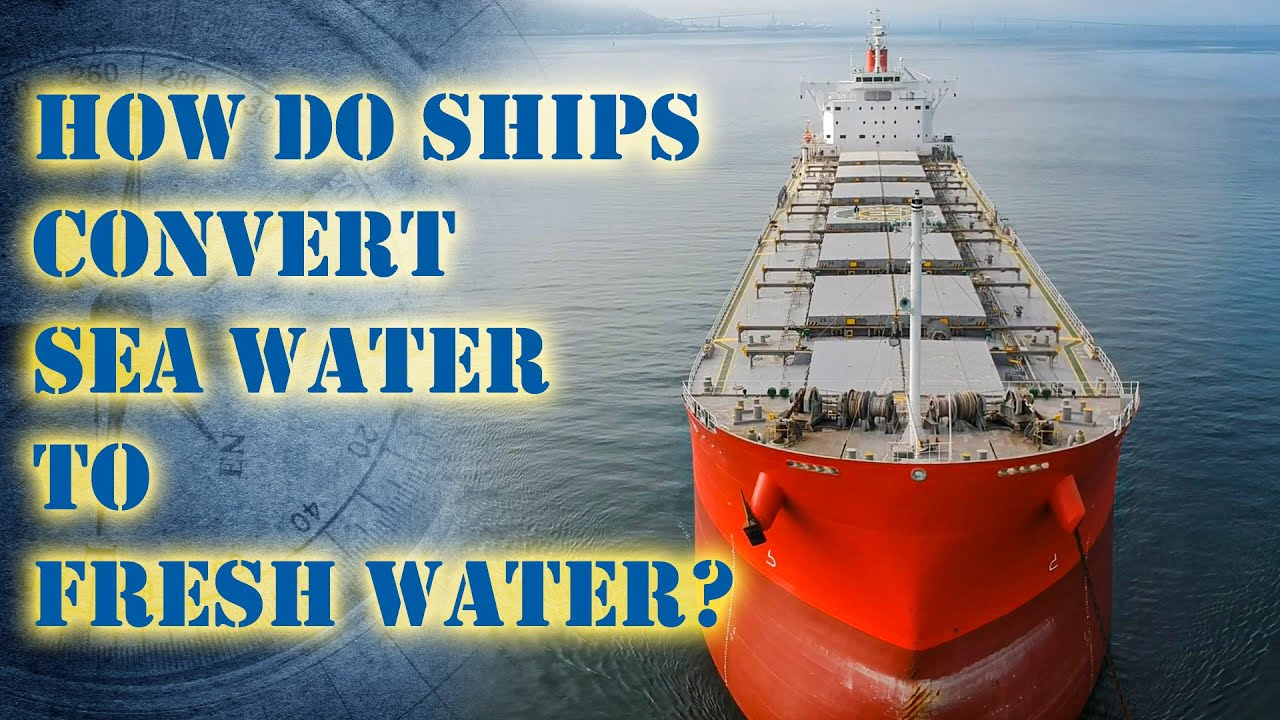Ship's Sea Water Cooling System | Study Call with Chief MAKOi episode 002
Summary
TLDRIn this episode of Study Hall, Chief Mahoney explains the operation of a ship's seawater cooling system, essential for managing the heat produced by engine operations. The video details how seawater is utilized as a coolant to absorb excess heat through heat exchangers, specifically focusing on two types: tube and plate coolers. It contrasts direct and centralized cooling systems, highlighting the efficiency and maintenance considerations of each. The centralized system, while more costly initially, reduces corrosion and overall maintenance. The episode sets the stage for further discussion on freshwater cooling systems, inviting viewer engagement on related maritime topics.
Takeaways
- 🌊 Ships' engines generate heat as they burn fuel to produce energy, which must be effectively managed.
- ❄️ A seawater cooling system is essential for dissipating excess heat and protecting engine components.
- 🛠️ The system primarily consists of a seawater pump and heat exchangers (coolers) that facilitate heat transfer.
- 🔄 Heat exchangers work by conducting heat from one fluid to another through solid boundaries.
- 🧊 There are two main types of heat exchangers used in ships: tube type and plate type.
- ⚙️ In direct cooling systems, seawater passes through all heat exchangers, offering efficiency but increasing corrosion risk.
- 🚰 Centralized cooling systems limit seawater use to one central cooler, using freshwater to transfer heat in other components.
- 💧 Direct cooling may lead to leaks, which can contaminate fluids and cause significant damage due to seawater's corrosive nature.
- 🛡️ Centralized systems offer lower corrosion and maintenance costs but have higher initial installation expenses.
- 🔍 Future episodes will discuss related topics, such as freshwater cooling systems linked to seawater systems.
Q & A
What is the main purpose of a ship's seawater cooling system?
-The main purpose is to cool down the heat produced by the ship's engines, preventing damage to metallic parts and allowing efficient operation.
How does the seawater cooling system operate?
-It operates by using a seawater pump to draw water from the sea, which then flows through heat exchangers to absorb heat from other fluids before returning to the sea.
What are the two main types of heat exchangers used in seawater cooling systems?
-The two main types are tube-type coolers and plate-type coolers.
What is the principle of heat transfer in heat exchangers?
-Heat transfer occurs by conduction through a solid boundary, with heat flowing from a higher temperature region to a lower temperature region.
What are the differences between direct cooled and centralized cooling systems?
-In direct cooling, seawater passes through all coolers directly, while in centralized cooling, seawater only passes through one central cooler, with freshwater circulating through the other heat exchangers.
What are the advantages of centralized cooling systems?
-Centralized systems have less corrosion and lower maintenance costs, despite higher initial installation costs.
What potential issue can arise from using direct seawater cooling?
-There is a risk of leaks in the coolers, which can lead to seawater contaminating other fluids and causing corrosion.
Why is seawater considered a good coolant for ships?
-Seawater is abundant and readily available in marine environments, making it an effective coolant for dissipating engine heat.
What happens to the seawater after it has absorbed heat in the system?
-After absorbing heat, the seawater exits the system through overboard valves and is released back into the sea.
What will the next episode of the series cover?
-The next episode will discuss the freshwater cooling system, which is directly connected to the seawater system.
Outlines

Этот раздел доступен только подписчикам платных тарифов. Пожалуйста, перейдите на платный тариф для доступа.
Перейти на платный тарифMindmap

Этот раздел доступен только подписчикам платных тарифов. Пожалуйста, перейдите на платный тариф для доступа.
Перейти на платный тарифKeywords

Этот раздел доступен только подписчикам платных тарифов. Пожалуйста, перейдите на платный тариф для доступа.
Перейти на платный тарифHighlights

Этот раздел доступен только подписчикам платных тарифов. Пожалуйста, перейдите на платный тариф для доступа.
Перейти на платный тарифTranscripts

Этот раздел доступен только подписчикам платных тарифов. Пожалуйста, перейдите на платный тариф для доступа.
Перейти на платный тарифПосмотреть больше похожих видео

Ship's Fresh Water Cooling System | Study Call Ep 003 Chief MAKOi

Auxiliary Generator Starting Procedure from Blackout condition | Garish Jerome

How Ships Convert Sea Water to Fresh Water | Chief MAKOi Study Call Ep 04

🔴FUNGSI PESAWAT PESAWAT BANTU DI KAPAL ⁉️ENGINE ROOM KAMAR MESIN KAPAL # PART 1

How Engine Cooling System Works ? Cooling System Explained |Air Cooled | Oil Cooled | Liquid Cooled

Motore Stirling: descrizione e funzionamento
5.0 / 5 (0 votes)
